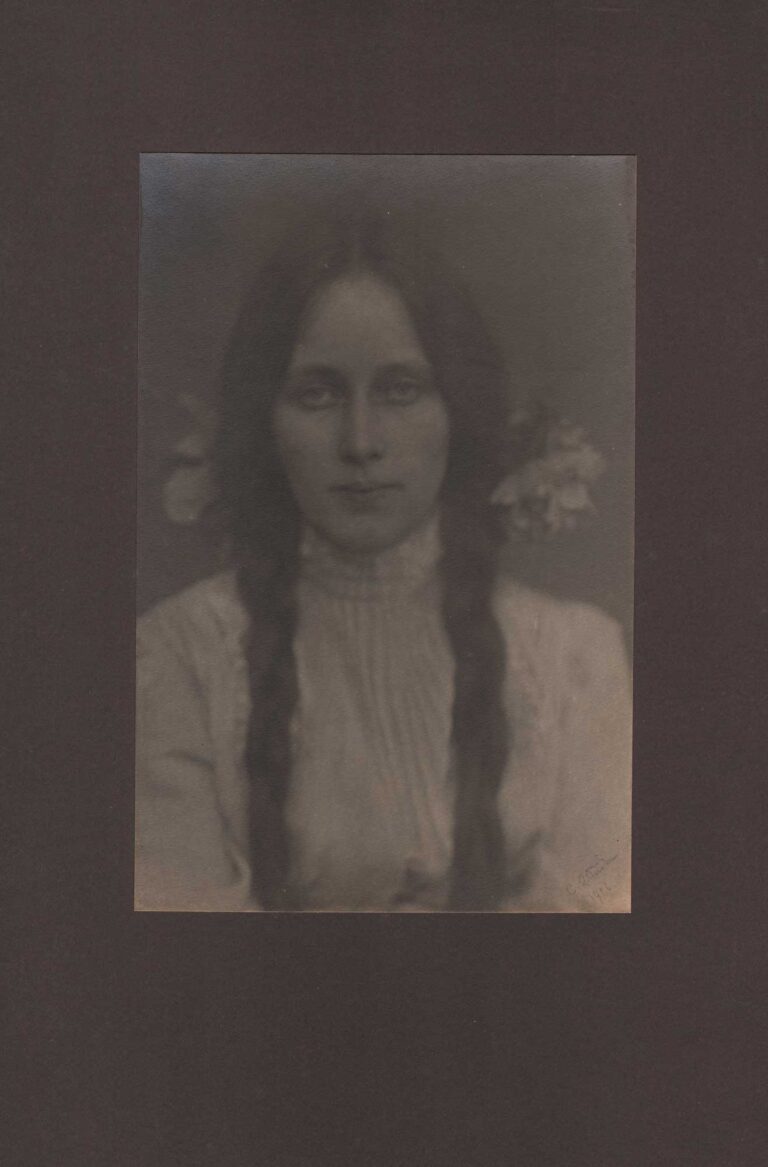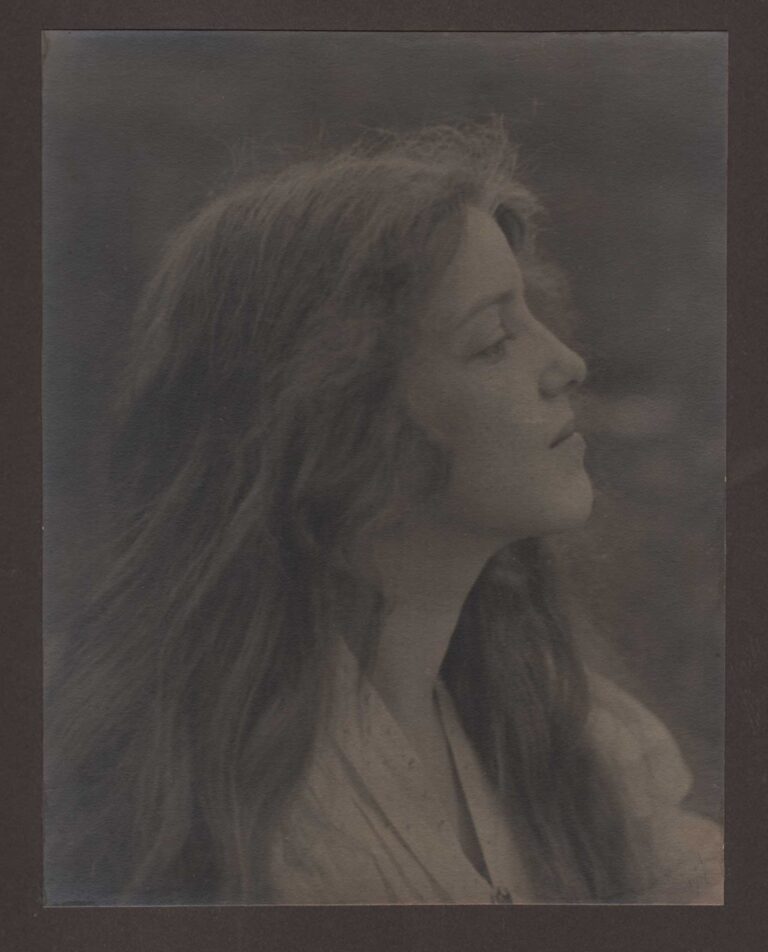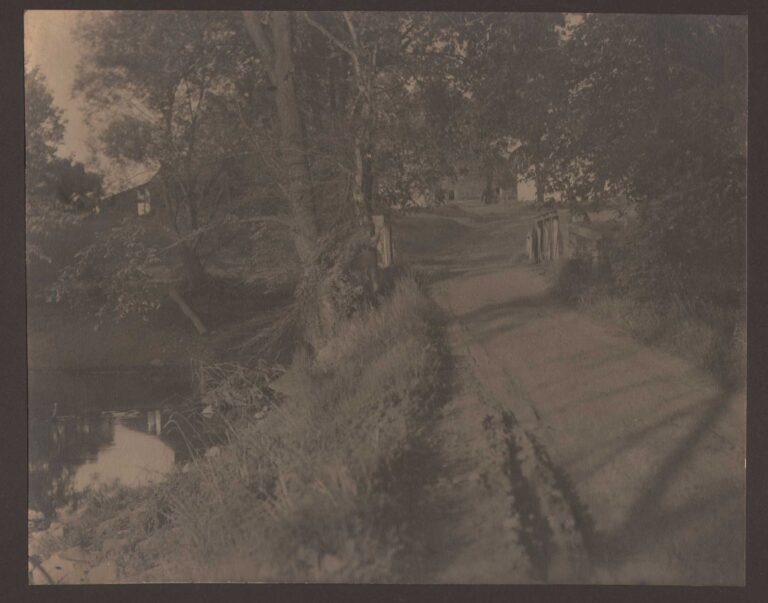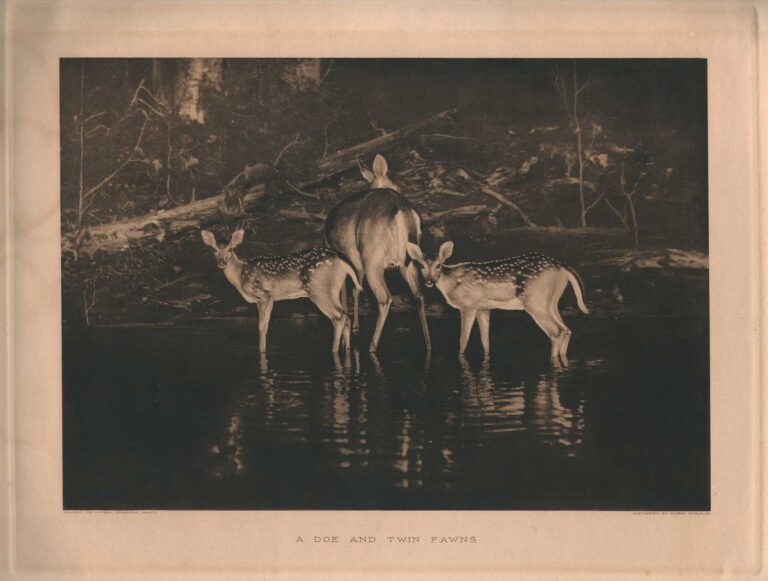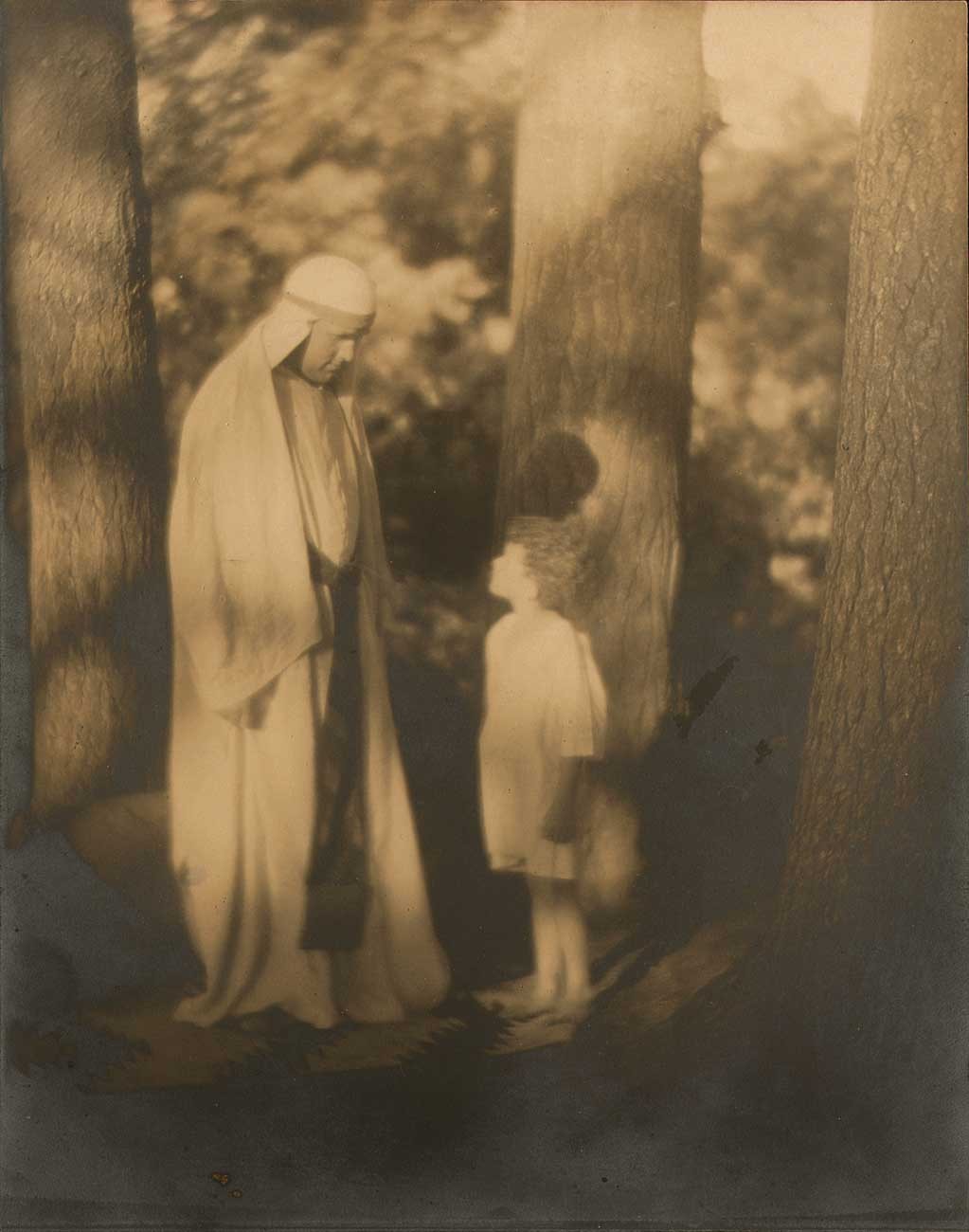
Samuel and Eli
This early pictorialist photograph by celebrated Canadian photographer Margaret Watkins (1884-1969) dates to 1916, and was taken at Camp Sidney Lanier which operated in Eliot, Maine from 1908-1940. Two other period photographs can be seen at page links below.
By the time this photograph was taken, Watkins in 1914 had attended the six-week session of the Clarence H. White Summer School of Photography at Seguinland on Five Islands, ME: a school she would eventually teach at beginning in 1917.
Further background on the camp bible plays are gleaned from the Maine Historical Society:
At Camp Sidney Lanier in Eliot, campers acted out Bible dramas written by Sidney Lanier Jr. (1870-1918) every Sunday in the woods. Lanier, using ideas developed by his father, poet Sidney Lanier Sr. (1870-1918), attempted to teach children the “art of living.” They participated in a strict routine of music, crafts, nature study, and other activities. Children went through a hierarchy of types of social organization to reach the highest form, which was spiritual and represented by farm and home.
…Sunday’s “primitive dramas” in the woods were part of a program to teach young campers the “democratic feeling of ideal human relationships” and provide “fundamental practice on daily living.” The camp operated from 1908 to 1940. (1.)
And from the groundbreaking volume Seduced by Modernity- The Photography of Margaret Watkins, authors Mary O’Connor and Katherine Tweedie offer the following insight on Margaret Watkins’ aesthetic thinking in relation to this photograph:
“Watkin’s photographs of the Bible dramas experiment with symbolic form. The forest provided the setting; individual trees served as more than backdrops and Watkins’s costumes and props offered an inventive use of material objects. As records of the events, the photographs partake of the dramatic mise en scène. Often the individuals dissolve into an organic whole —a tableau vivant that borrows its form from the history of painting.” (2.)
Illustrated in: Seduced by Modernity- The Photography of Margaret Watkins: Fig. 2.7: (Joseph Mulholland Collection) : p. 50
Print details recto: signed by Watkins in graphite at lower right corner: Margaret Watkins 16
-photograph originally contained within acidic scrap album owned by this archive held in place with black paper “photo corners”.
-slight silvering to lower margins and shadow areas
verso: adhesive and primary support remnants along upper and near lower margin
Provenance: photograph contained within an religious scrap album formerly from a Northern New Hampshire estate, previously owned by Frances Thurber (1904-1982) of Natick, MA. This based on several large envelopes addressed to Mrs. Edward M. Thurber Jr. of 60 Pond St. in Natick, Mass. from Lasell Junior College, Auburndale 66, Mass. . These are believed to have been postmarked from the early 1940’s and were found pasted within album. Another envelope postmarked 1943 addressed to Mrs. Robert M. Clark of 149 Bacon St., Natick, Mass. also found in album. However originally acquired by Thurber, this Watkins photograph was likely used as reference for Sunday school or church plays put on by her or others, with a period newspaper clipping for the Easter play The Cloth of Sendony presented at the Baptist Church in Natick pasted to the final scrapbook leaf.
Notes:
1. Acting Out Bible Stories, Camp Lanier: Maine Historical Society via Maine Memory Network online resource accessed August, 2014.
2. “Like a Butterfly Hitched to a Plow“-Becoming an Artist, 1909-1915: in: Seduced by Modernity- The Photography of Margaret Watkins: Mary O’Connor and Katherine Tweedie: McGill-Queen’s University Press: Montreal & Kingston: 2007: pp. 48-49
